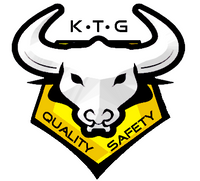Everyone knows that wearing safety shoes will help protect your feet and reduce risk & severity in the unfortunate event an accident occurs. But do you know that there are many kinds of safety shoes, each serving a different need? Thus it is important to understand what kind of safety shoes is required for your work environment. Let's take a look at some of the more common types of safety shoes below.
1) Steel Toe Safety Shoes
As the name suggest, steel toe safety shoes comes with steel toe cap built underneath the front part of the shoes. The ISO standards for steel toe cap is that it must be able to withstand up to 200 joules of impact and 15,000 newtons of pressure.
Steel toe safety shoes is suitable for environment where there is risk of falling objects or many large moving vehicles/machinery.
2) Steel Toe & Steel Sole Safety Shoes
While steel toe cap safety shoes serves well in protecting your feet from the toe or side, it does not protect you from sharp objects such as nails, which can pierce through a normal sole and injure your feet. This is where steel insole comes in. Built in between the bottom and cushion of your safety shoes, it offers protection from piercing injuries. The downside is that the steel sole makes the shoes heavier, making it cumbersome/tiring to wear long hours. The ASTM standards for steel sole plate is that it must withstand up to 270 psi of piercing force.
This kind of safety shoes is suitable for a environment where there are risks of piercing injuries along with falling objects or many large moving vehicles /machinery.
3) Steel Sole Kevlar Sole Safety Shoes
Steel sole plates, though useful in reducing piercing-related injuries, are stiff and uncomfortable. This is especially true when safety shoes are worn for more than 4 hours, the stress of the body weight starts to take a toll on the wearer's feet. Long hours wearing shoes with hard soles is a common cause for aching feet.
Kevlar penetration resistant sole was created to solve this issue for safety shoes' wearer. Kevlar sole offers superior comfort and flexibility as compared to steel sole plate. In addition, Kevlar soles are 70% lighter than their steel counterparts! The trade off is that Kevlar sole offers slightly lesser piercing force resistant.
This safety shoes is very suitable for workers who are required to wear safety shoes for long hours moving around (e.g. logistics, warehousing).
4) Composite Safety Shoes
Unlike steel toe cap which is made from metal, composite toe cap is made from materials such as fiberglass, carbon fiber or high condensed plastic. While obviously lighter than its steel counterpart, composite toe true value is that it does not conduct heat or cold in extreme temperature. In addition, a metal-free safety shoes is practical for work environment where metal detectors are present. The trade-off is that composite toe is usually bulbous and more expensive.
Useful for working in electrical hazardous environments or workplaces with metal detectors.
